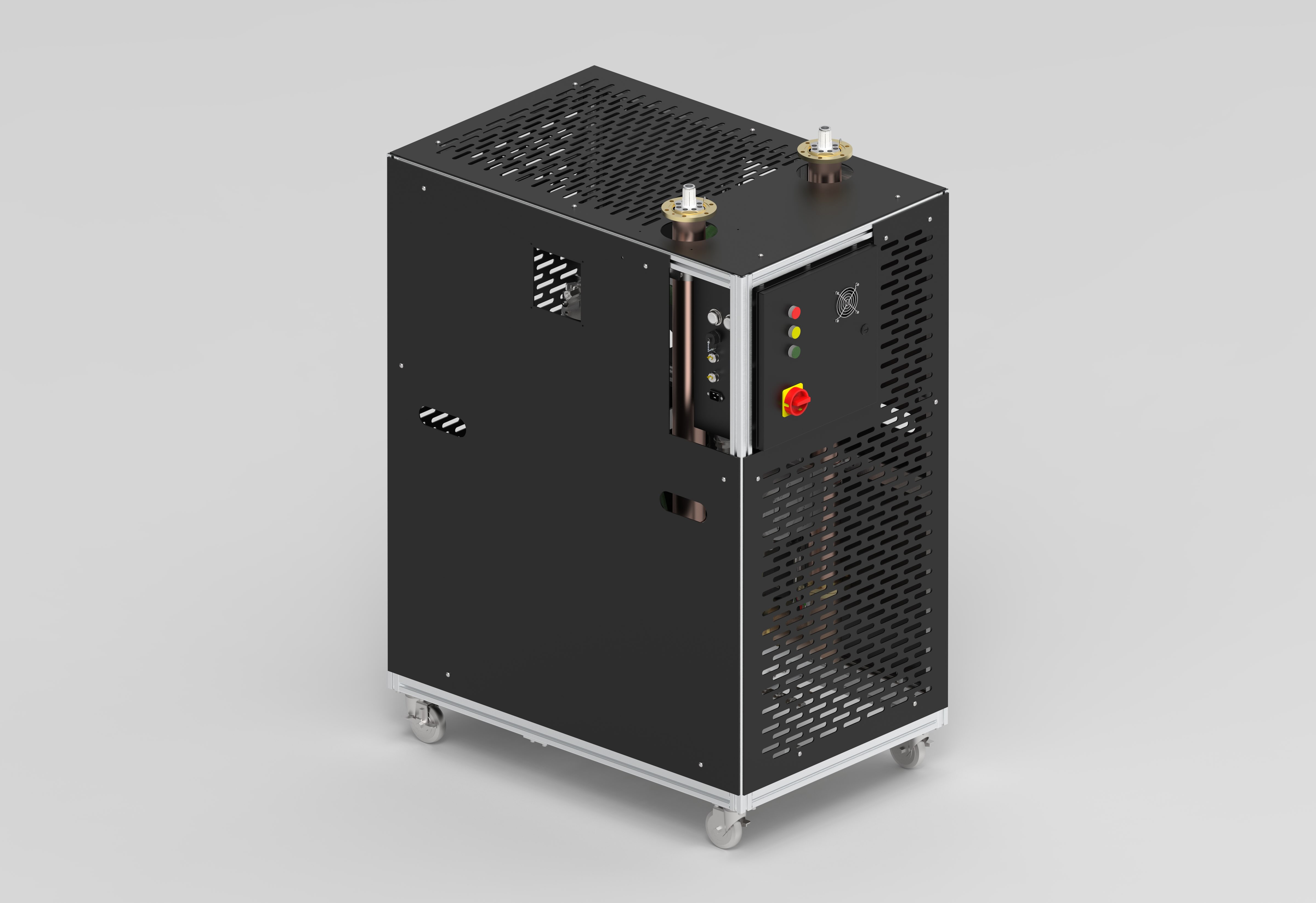Dielectric to Launch OptiLoad for Broadcast Transmission Sustainability at 2024 NAB Show
OptiLoad includes programmable logic controls to sense RF power and thermal temperatures to prevent transmission system failures

RAYMOND, Maine—At the 2024 NAB Show, Dielectric plans to unveil a new green, cost-reducing load solution featuring a closed-loop cooling system, protecting RF System components from failures that can cause extensive harm to the transmission system and shelter.
OptiLoad uses programmable logic controls (PLCs) to sense rising RF power and temperature levels, awakening the system to take action, according to the company. OptiLoad’s PLCs also monitor the health of the demand-driven circulator pumps and fans that are activated to address RF flow and temperature rises.
The OptiLoad design includes a water column load that Dielectric has offered for two decades, with more than 5000 units shipped worldwide. Using the water column load as a building block, Dielectric has added a built-in heat exchanger responsive to PLC activations. The water column load can run without coolant flow or fans activated with powers up to 5kW. This ensures plenty of headroom when RF is detected and the coolant and fans start to operate prior to the load seeing 5kW.
The entire SNMP-enabled system is centralized to a compact cabinet with wheels that can be located quietly in the corner, and easily be moved to a new space in the facility as transmission systems are redesigned. The SNMP functionality will allow the transmitter to do a daily handshake. If that handshake does not occur the station will be notified to prevent failures.
“OptiLoad’s modern design is a true convergence of passive RF equipment, electronics and sensing that was brought to life by our engineering team,” said Keith Pelletier, President, Dielectric. “It speaks volumes to the future of the RF business. For our customers, it addresses the all-too-frequent failures in the RF chains and a peace of mind that they have a solution that they do not need to worry about. The OptiLoad was customer-driven and we listened to their concerns about reliability and required features.”
Pelletier explains the importance of the passive RF load and a closed loop system in the design of the OptiLoad. This will prevent the coolant from getting contaminated and causing failures within the load that would eventually cause failures in the RF plumbing to the combining system. Once the load fails, other components will as well if not caught soon enough. “Once the coolant stops working or is no longer flowing through the pipes, failures and damage are imminent. Entire systems must be replaced in some cases, and cleanup services may be required to remove coolant from the floors. It can quickly turn very expensive.”
The OptiLoad can be used in multiple scenarios. For high-power TV systems, OptiLoad assumes the role of load solution for the transmitter combining rack. In this scenario, the typical RF power moving to the load is very small or non-existent. “OptiLoad brings value here because when amplifiers in a transmitter rack fail, it causes a power increase to the load,” said Pelletier. “The more amplifiers that fail, the higher the amount of RF power within the load.”
The professional video industry's #1 source for news, trends and product and tech information. Sign up below.
In traditional RF TV systems, the standalone load requires the consistent flow of coolant moving through the system to prevent catastrophic failure. OptiLoad’s logic controls only apply power to the fans, releasing coolant flows through the load as required. This makes OptiLoad a very green solution, as the load remains turned off 95 percent of the time. When a power imbalance occurs, OptiLoad protects the entire RF chain until the amplifiers can be replaced or repaired. Once repaired, OptiLoad goes dormant until called upon again, according to Dielectric.
OptiLoad is also ideal as a RF troubleshooting tool. In this second scenario, engineers can use OptiLoad as a station load when they need to test the transmitter or isolate the transmission line and antenna to identify and solve a problem. Same as the first scenario, OptiLoad only awakens and ramps up to full power if the load is being utilized, offsetting electricity costs and reducing power bills for the broadcaster.
OptiLoad further protects the broadcaster’s RF investment through several operating modes, the company said. It will transition to standby mode without RF power present when coolant temperatures are less than 130 degrees. OptiLoad initiates flow from the high-efficiency circulator pump when temperatures land between 130 and 150 degrees; fans are activated when the temperature rises from there.
“OptiLoad turns on the moment it senses the presence of RF, and ramps up from there utilizing variable speed fans and adjusting coolant flow rates,” said Pelletier. “This is the first system of its kind to recognize the presence of RF, which simply makes it the safest choice for protection in the market. As a closed-loop system, the coolant circulates strictly within OptiLoad to keep the liquid fresh. We have also simplified the overall design, favoring a minimal number of connections to ensure the coolant lines run consistently and without failure. We have essentially eliminated all leak points and addressed all necessary activations for system protection to ensure RF shelter floors remain dry and the passive RF parts remain intact for future use.”
The 2024 NAB Show takes place April 14-17 in Las Vegas. Dielectric will be in Booth W333 in the West Hall of the LVCC.
